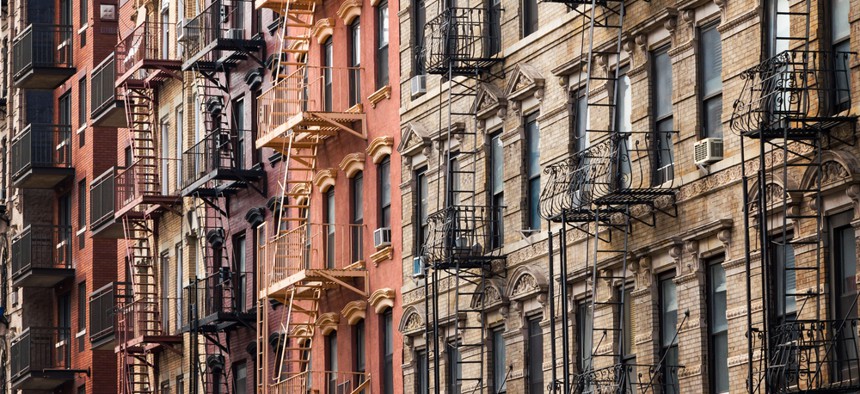How rent control promotes community stability

c Shutterstock
The FREEnewyork Campaign filled the state Capitol stairs on Feb. 27. The coalition of criminal justice advocates was joined by lawmakers in a raucous rally held on the steps of the Million Dollar Staircase in the Capitol. NYN Media was on hand as those assembled chanted that “we can’t wait” for lawmakers who wish to delay on legislation that would abolish cash bail, speed up trials and open discovery laws for criminal defendants.
“Why tweet about it when you can be about it”- @jamaaltbailey sponsor of Kaliefs Law and the Discovery for Justice Act pic.twitter.com/O7fpPuOjL4
— DecarcerationProject (@DecarcerateNYC) February 27, 2019
About 100 people attended the rally, with several nonprofits sending representatives, including Legal Aid Society, New York Civil Liberties Union, VOCAL-NY, Bronx Defenders, Brooklyn Community Bail Fund, and JustLeadershipUSA. The new Democratic majorities in the state Senate and Assembly have added urgency to their efforts and some activists were not afraid of warning lawmakers that their future support could hinge on what gets done – and what is left undone – this session.
“Right now is the time for bold action,” said Kerry Kennedy, president of Robert F. Kennedy Human Rights. “We can’t wait any longer, we call on our representatives to enact these reforms now.”
Nonprofits serving the Asian-Pacific American (APA) community want more money in the upcoming New York City budget. About 300 advocates representing different organizations rallied outside City Hall on Feb. 27 on the same day that they met with lawmakers. Asian-Pacific Americans make up 15 percent of the city population, but receive about 5 percent of discretionary spending, according to a Feb. 27 press release.
“As the highly diverse APA community grows across the City, the need for more culturally competent and language accessible services grows as well,” said Vanessa Leung, co-executive director of Coalition for Asian American Children and Families. “Contrary to the model minority myth, APAs face the highest rates of poverty and linguistic isolation across New York City.”
Supporting the 15% and Growing Campaign at City Hall today. @NYCCouncil invest more in local community groups that provide culturally competent and language accessible services #15percentAPA #15percentandgrowingnyc pic.twitter.com/XxQs3eh8Xx
— AAARI-CUNY (@aaaricuny) February 27, 2019
A new state law requires new training for nonprofit providers who serve runaway and homeless LGBTQ youth. About 40 percent of the clientele of such organizations are LGBTQ, according to a Feb. 27 press release from state Sen. Brad Hoylman, who sponsored the legislation. The Assembly has yet to vote on the bill, which would then go to Gov. Andrew Cuomo for his signature before becoming law.
“LGBTQ youth are nearly twice as likely as their peers to experience homelessness, rendering them vulnerable to abuse and exploitation,” Hoylman said in the press release. “It is critical, then, that our shelter system is equipped to handle the distinct challenges faced by LGBTQ youth. Unfortunately, this isn’t always the case.”
A new report examines how rent control promotes community stability. The release of “Our Homes, Our Future” comes as state lawmakers debate expanding tenant protections, including the expansion of rent control outside the New York City area. But the report – made through a collaboration between PolicyLink, the Center for Popular Democracy, and the Right To The City Alliance – takes a broader look, beyond the policy debates of the Empire State.
“If the rent control policies being debated right now in six states and two cities become reality, 12.7 million renter households will be stabilized,” according to a website promoting the report. “If adopted by states nationwide, 42 million households could be stabilized.”
Here are four takeaways from the report:
- Rent control increases housing stability and affordability.
- No other policy tool can match the scale of its effect.
- It requires minimal government costs to administer.
- The benefits disproportionately affect low-income people.
